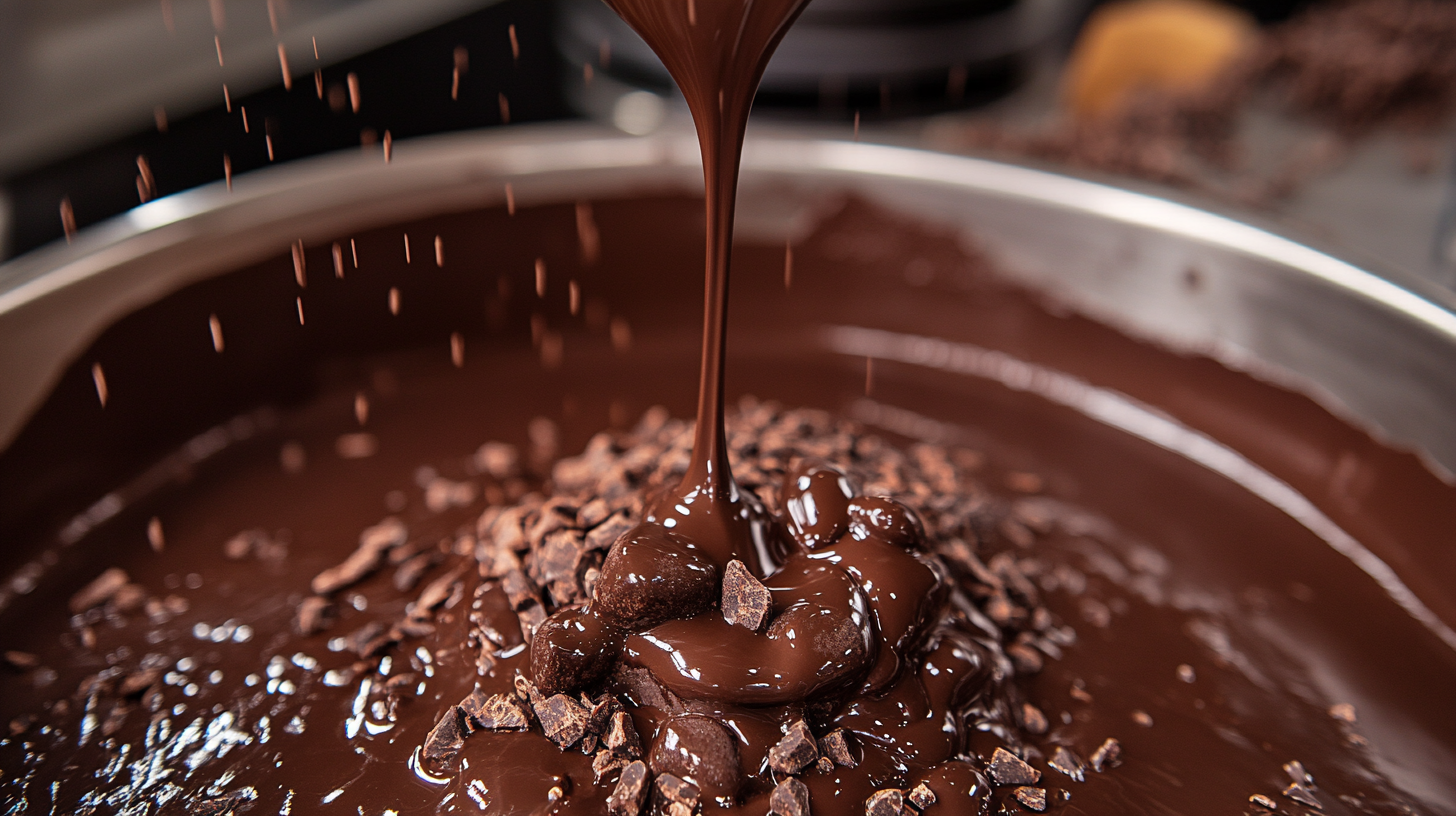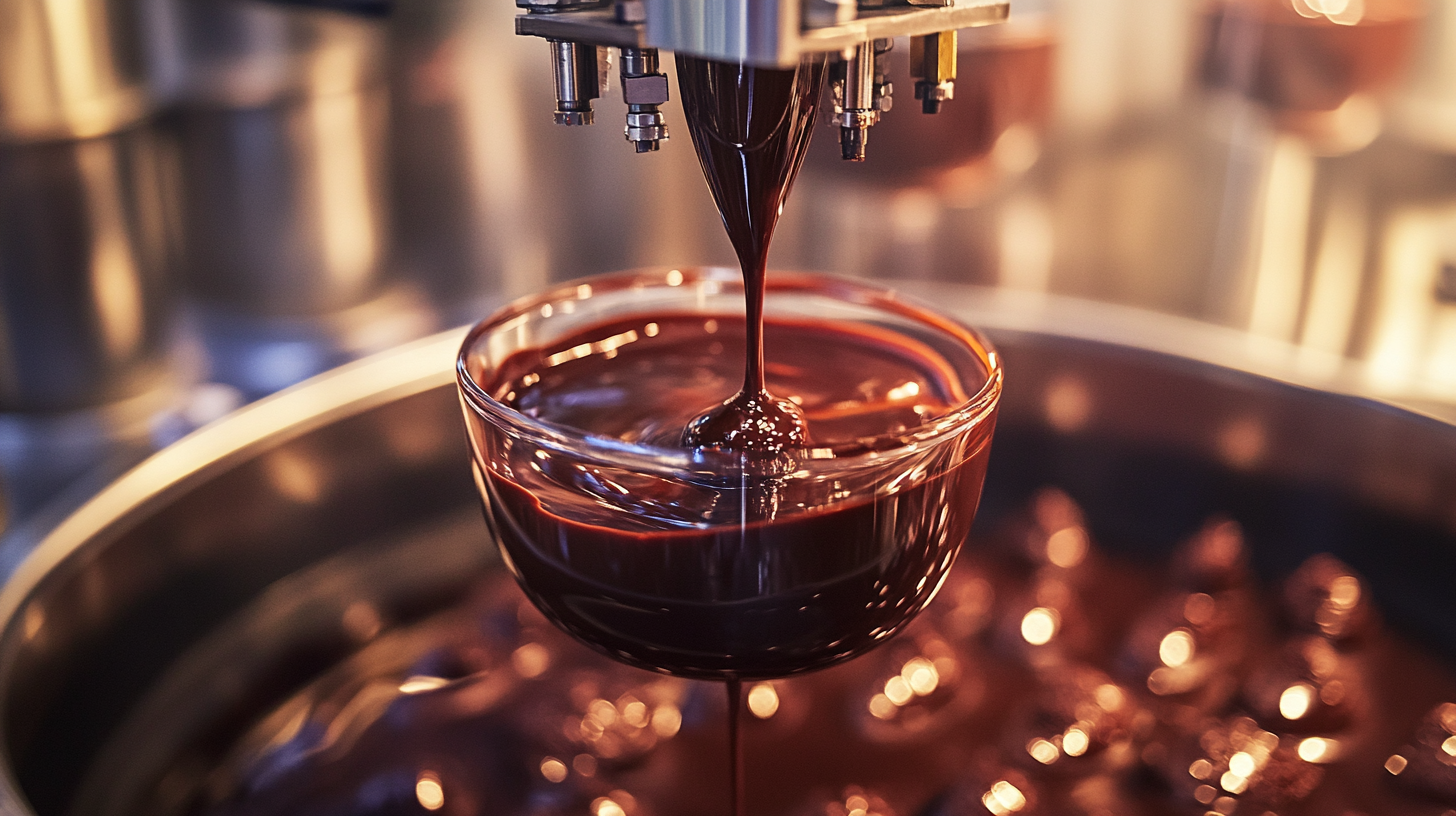As the global chocolate market continues to expand, with projections from the International Cocoa Organization indicating an annual growth rate of approximately 3.5%, the demand for advanced chocolate processing technologies is on the rise. Among these innovations, the Chocolate Tempering Machine has emerged as a crucial tool for manufacturers and artisanal chocolatiers alike, enabling precise control over the tempering process to enhance product quality. In 2025, it is anticipated that emerging trends in chocolate tempering technology will not only focus on improving efficiency and reducing production costs but also emphasize sustainability, with an estimated 40% of global chocolate buyers prioritizing eco-friendly practices in sourcing. By adopting cutting-edge tempering solutions, businesses can ensure the consistency of their chocolate products while capitalizing on market opportunities driven by evolving consumer preferences. This blog will explore the latest advancements in chocolate tempering technology and the significant advantages they present for global buyers.

The chocolate industry is evolving rapidly, particularly in the realm of tempering technologies that are shaping production methods in 2025. Recent innovations demonstrate how traditional processes are being refined for better quality, consistency, and efficiency. For instance, new temper meters, akin to those used in aerospace applications, have emerged, allowing manufacturers to achieve precise tempering of chocolate. These advancements ensure optimal texture and compliance, driving higher standards in artisanal chocolate production.
Amidst rising cacao prices and the looming threat of tariffs, the industry is exploring alternatives to mitigate costs. New formulations that incorporate fats and oils alongside cocoa are gaining traction, providing a cost-effective solution without compromising on quality. Notably, food scientists in Switzerland have pioneered methods to utilize more of the cocoa fruit, which could revolutionize ingredient sourcing and manufacturing processes. Innovations like these not only improve sustainability but also address consumer concerns regarding environmental impact. As manufacturers adapt to these emerging technologies, global buyers can look forward to enhanced products that reflect both quality and responsibility.
| Technology | Advantages | Market Impact | Future Outlook |
|---|---|---|---|
| Smart Temperature Control Systems | Precise tempering for enhanced sheen and snap | Increased product quality and consumer satisfaction | Expected growth in adoption in artisanal shops |
| Automated Tempering Machines | Reduced labor costs and time efficiency | Higher production rates for manufacturers | Rising demand from large-scale producers |
| Energy Efficient Machines | Lower energy consumption, reducing operational costs | Promotes sustainability in chocolate production | Driven by eco-conscious consumer preferences |
| Data-Driven Quality Assessment | Real-time monitoring for quality assurance | Minimizes defects and enhances brand reputation | Growing integration of IoT technologies |
As the chocolate industry evolves, advanced chocolate tempering technology is poised to offer significant advantages for global buyers in 2025. One of the key benefits is the enhanced quality of the final product. Modern tempering methods ensure that chocolate retains its glossy finish and satisfying snap, essential for high-end confectionery and artisanal chocolates. This improvement not only elevates the product aesthetic but also enhances the overall consumer experience, making it more appealing in competitive markets.
When considering the shift to advanced tempering techniques, buyers can utilize several tips to maximize their investment. First, it's essential to assess the capabilities and reliability of suppliers who adopt these new technologies. Buyers should also engage in training sessions to understand the tempering process better, ensuring their teams can maintain consistency in quality production. Lastly, investing in high-tech tempering machines can significantly reduce waste and optimize production efficiency, leading to cost savings and superior product outcomes.
In addition to quality improvement, advanced tempering technology can contribute to better supply chain management. With precise temperature control and monitoring, manufacturers can forecast production more accurately, minimizing delays and ensuring timely deliveries. This reliability is crucial for global buyers who depend on prompt service to meet market demands.
In recent years, chocolate tempering technology has seen significant advancements, allowing manufacturers to achieve cost efficiency and quality consistency in their production processes. These emerging trends focus on automating the tempering process, reducing labor costs while also minimizing errors associated with manual tempering. As global buyers in 2025 look for reliable partners, leveraging this technology can lead to significant savings and an increased ability to meet market demands without sacrificing product quality.
Tips for manufacturers considering new tempering technology: First, invest in equipment that offers precise temperature control, ensuring that the chocolate is tempered perfectly every time. Second, consider adopting continuous tempering machines that can keep pace with production demands, thereby significantly improving efficiency. Lastly, prioritize technology that provides real-time data analysis, which can help in maintaining quality consistency and facilitates adjustments on-the-fly, ultimately resulting in a superior end product.
As global competition intensifies, chocolate producers must adapt to these trends to remain relevant. By focusing on cost efficiency and quality consistency through cutting-edge tempering technology, businesses can not only enhance their product offerings but also build stronger relationships with buyers worldwide. Embracing these innovations will pave the way for a more sustainable and profitable future in the chocolate industry.
As the chocolate industry faces rising cocoa costs and growing consumer demand for sustainability, new technologies in chocolate tempering are emerging as a vital solution. Innovative practices are being developed that incorporate sustainable fats and oils, allowing manufacturers to reduce dependency on cocoa without compromising the quality of their products. This shift not only addresses cost concerns but also aligns with a broader movement toward environmentally-conscious production methods.

Recent discussions at industry exhibitions highlight the importance of sustainable practices in tempering technology. Manufacturers are increasingly investing in advanced machinery designed to enhance production efficiency while minimizing their ecological footprint. By adopting these new technologies, chocolate producers can ensure a responsible supply chain and support smallholder farmers in cocoa-producing regions, ultimately fostering a more sustainable cocoa sector. With these advancements set to play a crucial role in the industry's future, global buyers can expect a more eco-friendly approach to chocolate production by 2025.
The chocolate industry is poised for transformative growth as we advance into 2025, driven by innovative chocolate tempering technologies and shifting market demands. According to a recent report by Grand View Research, the global chocolate market is expected to reach USD 161.56 billion by 2025, expanding at a CAGR of 4.6%. This growth is not only attributed to rising consumer preferences for premium chocolate but also to the increasing focus on sustainability and ethical sourcing of cocoa. As buyers become more discerning, the demand for high-quality, tempered chocolate that maintains smooth texture and rich flavor is surging.
Emerging trends in tempering technology, such as the adoption of modular tempering machines and automated tempering processes, are set to revolutionize chocolate production. These innovations are designed to enhance efficiency and precision, reducing the time and labor traditionally required for chocolate tempering. For instance, recent advancements in temperature control systems have increased accuracy by up to 20%, allowing producers to achieve optimal crystallization more consistently. As manufacturers adopt these sophisticated technologies, they will be better positioned to meet the evolving tastes of consumers, which increasingly favor artisanal and unique chocolate experiences. This alignment of production capabilities with market demand is essential for staying competitive in a rapidly changing landscape.
